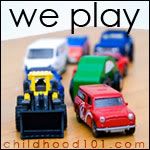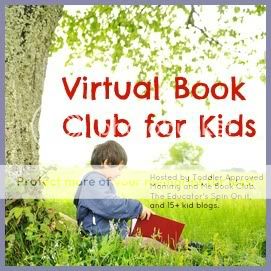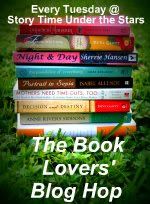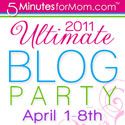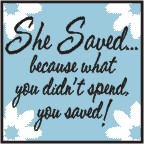Godzilla and Scrooge Play Nice
Thursday, February 24, 2011
Sometimes
Can a 4-year-old and an 18-month-old be playmates? It appears it is possible, but may be accompanied by some scuffles and lessons learned. In the last couple months, T has achieved a level of mobility and attention span that has made him a more interesting (and interested) playmate for B. Trouble is, sometimes B has the patience of a saint and good naturedly adapts his game to T’s focus and activity level, but sometimes he doesn’t. Not that he should have to. But is it unreasonable of me to wish I could submit requests for peaceful playtimes in order of priority?
Godzilla
As toddlers are wont to do, T very much enjoys knocking things over, emptying things out, and otherwise exerting control on the world around him. Often, these kind of physical activities appeal to B as well and my only concern is where to draw the line on rough-housing. But when T “exerts control” on the train track B assembled or the “garden with a bird’s nest” B built with trio blocks, T begins to resemble Godzilla.
Scrooge
I must begin by assuring you, B is not Scrooge-like in general. Most of the time, he is kind and generous to his brother and anyone else around. He insists upon equality and fairness for T in turns on the slide, craft supplies on the table, or cookies on the plate, usually. But there are moments, often preceded by the Godzilla behavior noted above, that B becomes downright Scrooge-ish. Suddenly (and always temporarily) T cannot touch, get near, or even look at anything that B might consider playing with now or in the foreseeable future.
Trying Not to Intervene
I try not to jump into the squabbles right away because I want them to learn problem solving skills and strengthen their relationship (and because I do have other things to accomplish in a day). The main reasons I do find myself refereeing: when toys involved are large enough that Godzilla begins wielding them as weapons or when Scrooge gets so emotionally wrought that he lashes out physically. Most often, a temporary separation is enough to redirect T’s attention and/or help B remember that even a bull-ish playmate is more fun than playing solo.
The Bright Side of Sharing
A fun book for helping children hone the social-emotional skill of sharing is The Boy Who Wouldn’t Share , by Mike Reiss. Written in playful rhyming couplets, the text tells the story of Edward, a boy who refuses to share anything with his sister Claire. He hoards toy after toy until at last he is trapped beneath them. The humor of the rhymes is further emphasized by the bright and exaggerated illustrations of David Catrow. When mom arrives with a treat, she gives it all to Claire since Edward is no where in sight. Which brings us to my favorite line in the book:
, by Mike Reiss. Written in playful rhyming couplets, the text tells the story of Edward, a boy who refuses to share anything with his sister Claire. He hoards toy after toy until at last he is trapped beneath them. The humor of the rhymes is further emphasized by the bright and exaggerated illustrations of David Catrow. When mom arrives with a treat, she gives it all to Claire since Edward is no where in sight. Which brings us to my favorite line in the book:
“And Claire, who did not hold a grudge, helped him out and gave him fudge.”
After which, the spat is resolved and brother and sister enjoy the day playing together. There is more to the moral than Edward’s discovery that being greedy left him trapped and fudge-less. What anyone could stand to be reminded of is Claire’s lack of grudge. While I don’t hesitate to encourage sharing, it is more important to me that both boys learn that playtime may have its ups and downs, but grouchy moods are fleeting and there’s always more fun to be had.
Appropriate for toddlers, preschoolers, primary grades.

I’d love to hear your thoughts on sibling playmates! And I do love your book suggestions too!




















